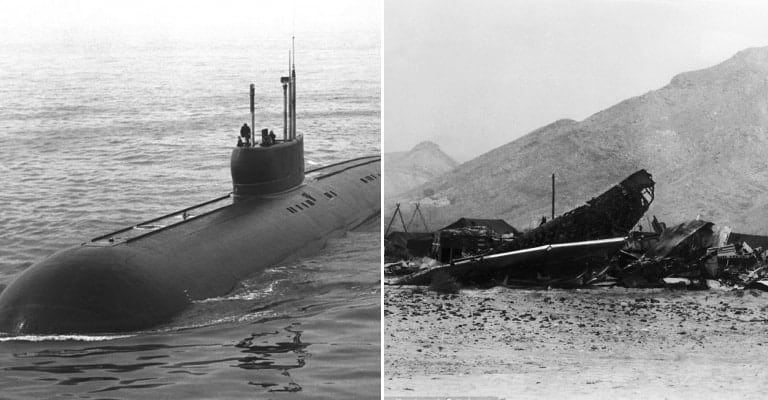Despite the accumulation of vast arsenals of unimaginable destructive might, the world has never experienced the apocalyptic power of a nuclear weapon, deliberately or otherwise, since 1945. However there have been countless occasions in which humanity came impossibly close to unintentionally experiencing the devastation of these “destroyers of worlds” – whether through carelessness, accident, malfunction, or thoughtlessness.

Here are 20 instances in which nuclear weapons were crashed, dropped, lost, or detonated that almost resulted in monumental disaster:

1. A U.S. Air Force B-36 bomber dropped a nuclear bomb into the Pacific Ocean
The first officially acknowledged nuclear weapons accident occurred on February 13, 1950, as a United States Air Force B-36 bomber traveled from Eielson Air Force Base, Alaska, to Carswell Air Base, Texas. En route the plane suffered mechanical failures after six hours of flight, crippling three of the bomber’s six engines at an altitude of 12,000 feet. Unable to maintain altitude and facing severe weather and icy conditions, making a conventional emergency landing impossibly dangerous, the crew deviated from their established flight plan to head out over the Pacific Ocean and preemptively jettisoned their cargo: a nuclear bomb containing large quantities of TNT and enriched uranium, but crucially lacking the necessary plutonium to create a nuclear explosion.
Dropped from a height of 8,000 feet the bomb detonated upon impact in the Pacific Ocean, with the explosion described as a “visible bright flash”. All sixteen crew and passengers subsequently parachuted to safety and were successfully rescued, with the bomber crashing at an unknown location in Canada. Despite significant search efforts, including the identification of the bomber’s crash site four years later and false reports in 2016 of underwater discovery by a diver near Pitt Island, the remains of the nuclear bomb have never been either located or recovered.

